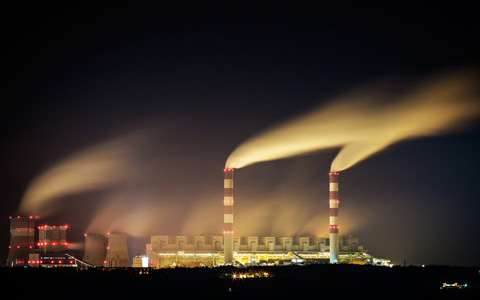European research project helps cut CO2 emissions
Background
Project: NANOGLOWA
Global warming is the biggest threat to mankind in the 21st century as the ongoing battle against CO2 emissions takes many forms. Throughout Europe there is the growth and development of windfarms, research into wave energy, the focus on recycling, waste reduction, and prototypes of electric engines or engines fuelled by alternative energy technologies.

While all these efforts contribute towards reducing CO2 emissions, the most effective method of reduction is to tackle the main contributors – fossil fired power stations and industries with similar levels of CO2 emissions. Current methods of CO2 capture are neither cost effective nor energy efficient.
The innovative NanoGlowa project (“NanoMembranes” against Global Warming) sought to address the problem at source. The objective was to develop a layered material which would be able to capture CO2 from power plants below €20 /ton with a built-in, smart, diagnostic technique. The consortium of 27 partners including 7 SMEs involved 13 European countries plus Israel. Five innovative membrane materials have been developed simultaneously. Smart design modules, for long life, low degradation and contamination combined with integrated performance monitoring have been tested in the laboratory and in the field.
Ultimately this project will lead to the manufacture and production of a membrane which is expected to reduce emissions and lead to future sustainable power plant design for low CO2 output.
Use of this technology may reduce CO2 emissions significantly, but of course this comes at a cost to operate the pressure across the membrane and a balance is to be found.
The field-testing carried out by six future end-users guaranteed a realistic outcome of the materials. Pilot projects involving the use of the “NanoMembranes” in the cement industries as a means of reducing CO2 emissions are ahead.
This research project was coordinated by KEMA Nederland BV with an overall budget of almost €12 million of which the European Union contributed over €7 million.
International Day for the Preservation of the Ozone Layer – 16 September 2014
For more information click here
This innovation was made possible by Israel’s continued participation in the official Horizon 2020 fund, managed in Israel by ISERD part of The Israel Innovation Authority (Formerly the Office of the Chief Scientist and MATIMOP). The initiative has taken Israeli R&D to the next level with the help of ground-breaking collaboration between scientists in Israel and Europe, as well as essential funding and support.
Project details
Project acronym: NANOGLOWA
Participants: Netherlands (Coordinator), France, UK, Israel, Spain, Germany, Italy, Norway, Portugal, Greece, Belgium, Denmark, Poland, Switzerland
FP7 Proj. N° 26735
Total costs: € 11 891 811
EU contribution: € 7 200 000
Duration: December 2006 – November 2011
